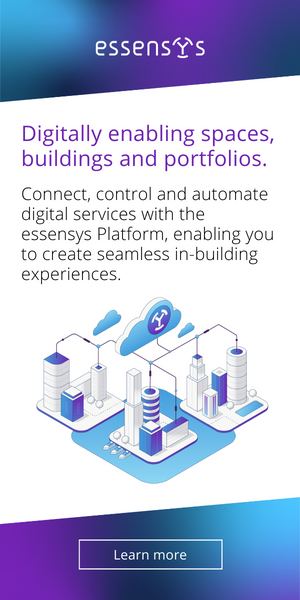Solving the Tribal Knowledge Gap with AI: 3 Lessons from a Public REIT

Itís the end of the month. Your accounting team is fielding calls from vendors about unpaid bills while juggling monthly reporting and reconciliations. Everyone is stressed. You just hired two new AP specialists a few weeks ago, but the backlog of unpaid invoices isnít shrinking. Itís no better than the month before. How could this be happening again?
Rising turnover in accounts payable jobs is compounded by difficulty hiring and onboarding new talent into roles known for being heavy on manual data entry and light on career potential. Real estate investment and property management companies got used to hiring more staff to accommodate the extra work that accompanies growth, but now many struggle with recruitment and retention.
Staffing aside, more organizations are coming to the conclusion we reached at hiring doesnít easily address the essential ingredient in a well-run AP operation Ė tribal knowledge. We set out to solve this problem at a large public REIT and succeeded. Hereís what we learned along the way.
The Cost of AP Inefficiency
Anyone familiar with the stressful scenario above knows the true cost of inefficient AP operations: missed and late payments lead to unhappy vendors, late fees, and poor D&B ratings that can impact future cash flow; spikes in invoice volume force rushed processing, leaving businesses more vulnerable to fraud attempts and accidental overpayment.
Even after implementing AP automation to streamline AP workflows, bottlenecks persist alongside paper-first manual processes, limiting the ROI of substantial tech investments.
Containing the costs of AP operations was a priority, and the initial implementation of Yardi Payscan to automate AP approval workflows presented a relatively quick and substantial win for efficiency, visibility, and timeliness. But to fully eliminate the bottlenecks in our process, we had to solve for one key variable: our most experienced AP person-letís call her Jane.
Unblocking the Tribal Knowledge Bottleneck
We had a Jane who had been with the firm for decades and over those years she became the wiki for the rest of the team letting people know how to break apart any invoice 15 ways Ė between properties, entities, deals, expense accounts, segments Ė ensuring it would get paid correctly and on time. This demands insights that donít show up on the printed invoice, and take years to develop.
As we grew year over year, so did the volume and complexity of AP work. We saw a cycle of taking months to fill open positions, more months if not years to fully train up new staff and then having them leave and take that knowledge with them which started the recruiting cycle again. This was with Jane and a few long term people picking up the slack, what would happen if she retired? Would bills still get paid without her expertise? Could we even train new staff without her?
We needed a way to scale what AP could do, but the market offered no help. Most of our options were some combination of outsourcing manual data entry and using OCR, templates, or robotic process automation Ė all of which addressed invoice data ingestion and indexing to some degree, often with tradeoffs. None captured or codified tribal knowledge.
Watching Janeís work more closely helped us understand that every invoice coding decision she made in a predictable, consistent way could function as an annotation, a rule inclusive of context and nuance that could be learned. Thatís what told us AI, and more specifically, machine learning, could capture and apply that knowledge the way Jane could.
We built a custom solution that used past invoice history and machine learning to identify invoice coding patterns, and apply them to new invoices Ė like Jane, but at scale, without slow manual data entry, and decoupled from individual knowledge.
This led to massive capacity gains. Within a few months, work that once required nearly 30 full-time AP staff could be done with a team one-third the size. This meant opening up their time for learning new skills, moving them into more advanced accounting work, and increased job satisfaction due to less repetitive work. It also made us less vulnerable to turnover, and improved onboarding and productivity for new employees.
Our solution became the seed that eventually grew into PredictAP Ė a cloud-based invoice capture platform that could automate invoice ingestion and coding with AI.
3 Lessons for Successfully Leveraging AI and Automation
- Increase D&B ratings by paying more invoices on time
- Realize vendor discounts from early payments
- Shift some accounting work into accounts payable
- Incorporate volume from new portfolios without adding headcount
As you consider the potential benefits of process automation and artificial intelligence in your organization, focus on the basics. Staying close to the core problem will help you assess and articulate your needs, and deliver better outcomes without having to become an expert in all emerging technologies.
This Week’s Sponsor
PredictAP is a cloud-based invoice capture solution for real estate AP that automates invoice ingestion and coding using AI. PredictAP integrates with existing AP automation to eliminate manual data entry, improving speed, increasing capacity, and reclaiming time for high value work. Visit www.predictap.com to learn more.
Read Next
 5/15/2025
5/15/2025
Tech, Talent and Transformation: 2025 Digie Finalists Announced For 27 years, Realcomm has presented the Digie Awards to acknowledge companies, real estate projects, technologies, and individuals that have advanced the commercial real estate industry through the strategic use of technology, automation, and innovation.
 5/15/2025
5/15/2025
Empowering Space Management with Data-Driven Visualization For effective CRE space management, itís critical to centralize lease data, maximize rental square footage (RSF), improve energy efficiency and reconfigure spaces to meet changing needs.
 5/8/2025
5/8/2025
The AI-Powered Workplace Evolution: Redefining the Business Landscape In today's rapidly evolving business environment, the fusion of Artificial Intelligence (AI) and Workplace Management is revolutionizing the way organizations approach workspace optimization and operational efficiency.
 3/27/2025
3/27/2025
The Convergence of Edge Computing, Cloud, and AI in Building Automation and Smart Buildings In the built environment, we have seen the convergence of Operational Technology (OT) and Information Technology (IT), later expanding to include Workplace Technologies (WP).




%20(1)%20(1)%20(1).png)







